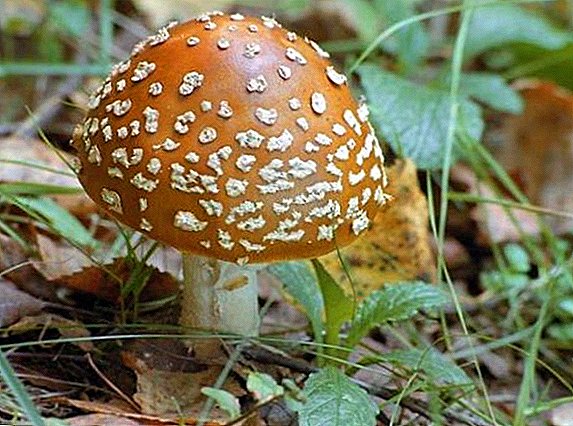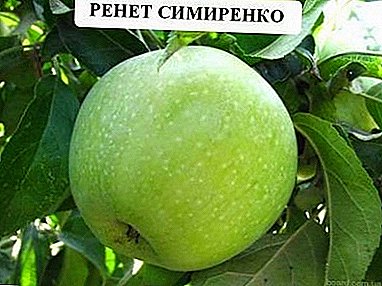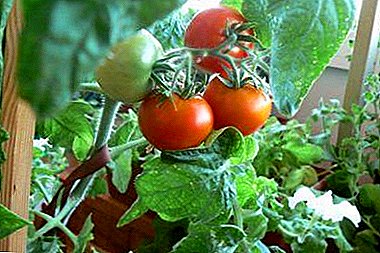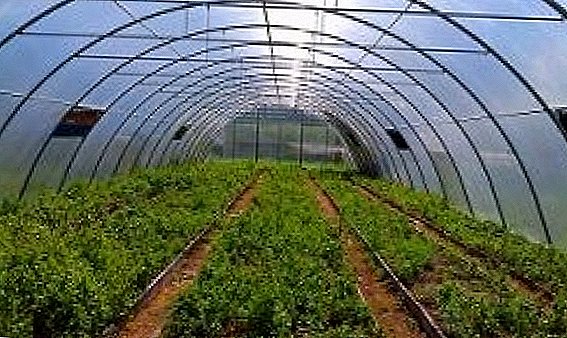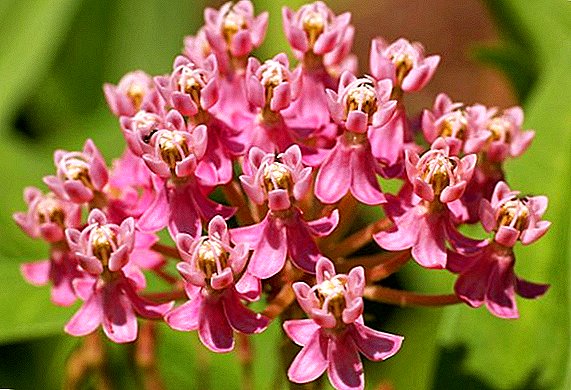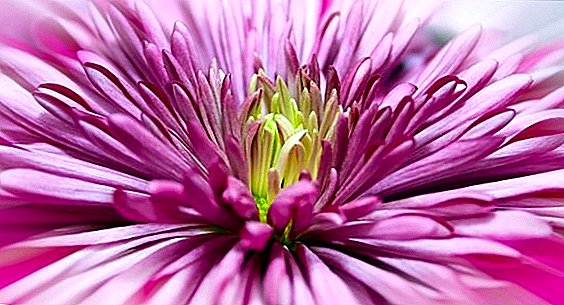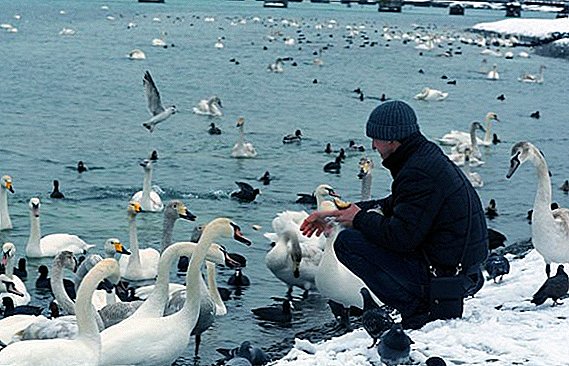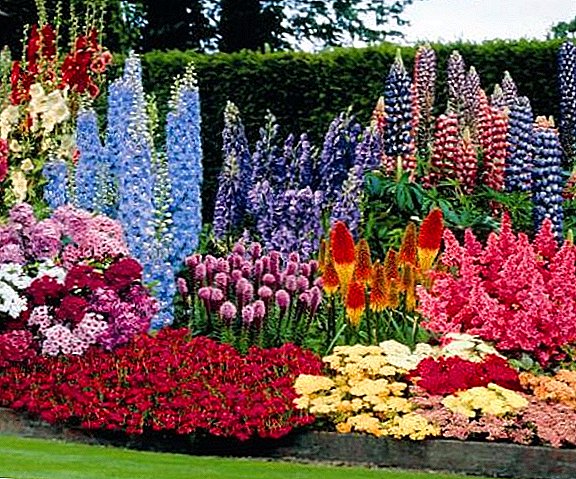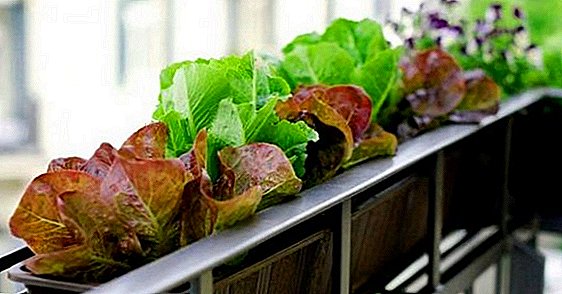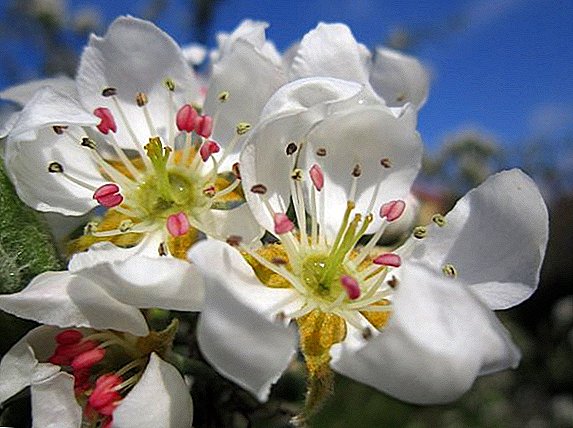 Pears - very tasty, and also very healthy fruit. From the more common apples pear distinguishes a sweet taste and exquisite aroma. Often in the gardens and suburban areas there are more apple trees than pear trees.
Pears - very tasty, and also very healthy fruit. From the more common apples pear distinguishes a sweet taste and exquisite aroma. Often in the gardens and suburban areas there are more apple trees than pear trees.
Perhaps this is due to a large variety of different varieties of pear. As a rule, all these varieties are a little similar to each other. But especially among them, the pear of the Memory of Zhegalov variety stands out.
Pear Memory Zhegalov - quite popular, late autumn variety, has a universal purpose. Let's look at all the features of this class.
Did you know? The variety was named in honor of the outstanding geneticist Sergei Ivanovich Zhegalov, who created the first in the USSR specialized department of breeding.
History of breeding pear varieties Memory Zhegalov
 Breeders of the former Soviet Union have a great reason for pride.
Breeders of the former Soviet Union have a great reason for pride.
The results of their hard work can be observed in a huge number of varieties of pears and other plants, which with great success spread across the garden plots.
One of the products of horticulture was the pear variety in Memory of Zhegalov, which was bred by a famous breeder - Sergey Tikhonovich Chizhov.
In the 1980s, S. T. Chizhov conducted work on the hybridization of pear varieties such as Olga and Lesnaya Beauty. As a result of selection, the variety Memory of Zhegalov was bred. In the 90s, the variety passed all state tests and was approved for industrial use.
Characteristic pear varieties Memory Zhegalov
Description pear varieties Memory Zhegalov should start by listing its main characteristics. For this it is necessary to dwell on the description of both the tree itself and its fruits - fragrant and juicy pears.
Did you know? The memory variety Zhegalov is resistant to the main diseases of fruit trees of fungal character, such as scab.
Tree description
Trees of this variety are characterized by a rapid growth rate.. Often the trees are of medium height, but they can also be tall. The crown of the tree is of a spreading type, rather rare, but is characterized by good foliage. The bark of the tree is gray or dark gray. The variety has a rather high yield, for example, almost 40 kilograms of pears can be collected from a single tree.  Usually the height of the pear tree in Memory of Zhegalov is 3 meters. The ripening period begins in the second half of September, and if the weather is overcast, with a small number of sunny days, then the ripening may linger and begin in early October. Pears are very well kept on the branches. The difference of the memory of Zhegalov - This is a high marketability and quite good transportability.
Usually the height of the pear tree in Memory of Zhegalov is 3 meters. The ripening period begins in the second half of September, and if the weather is overcast, with a small number of sunny days, then the ripening may linger and begin in early October. Pears are very well kept on the branches. The difference of the memory of Zhegalov - This is a high marketability and quite good transportability.
Fruit Description
Fruits of a grade reach average size. As a rule, the weight of the fruit is 125-145 g, sometimes pears can reach a weight of 210 g and even more. The pear has a biconomic or obovate form, covered with a thin, smooth, glossy, medium dense and slightly greasy skin. The color of the pear has a greenish or lemon yellow color with a blurry, dull blush of a reddish hue. Seeds of medium size with dark brown, rich color.
The flesh of the pears is distinguished by a light white or light yellow color. Pears are characterized by high rates of oiliness and juiciness. The pulp of the fruit is tender, has a medium grain size. Fruit Pear Memory Zhegalova has a sweet-sour taste and a pronounced aroma.
Pros and cons varieties
 The biggest plus of the Zhegalov memory variety is this is a precocity. Due to the precociousness of the first harvest of pears can be obtained 3-4 years after planting a tree. For comparison: varieties such as Moscow Bergamot and Dobryanka bring the first fruits in 4-5 years, and the February souvenir variety and even more - in 5-6 years.
The biggest plus of the Zhegalov memory variety is this is a precocity. Due to the precociousness of the first harvest of pears can be obtained 3-4 years after planting a tree. For comparison: varieties such as Moscow Bergamot and Dobryanka bring the first fruits in 4-5 years, and the February souvenir variety and even more - in 5-6 years.
Another advantage of pear memory Zhegalov is good transportability and shelf life.
The storage life of Zhegalov’s memory variety is 100-120 days, thanks to which you can enjoy fragrant and fresh pulp right up to the beginning of February. Also, the variety is characterized by weak precipitation of fruits, which allows you to save most of the harvest of pears.
The undoubted advantage of the Memory of Zhegalov variety is an excellent winter hardiness, which is complemented by resistance to bad weather conditions.
Of the minuses of the variety, it is possible to single out the pollination of the pear in memory of Zhegalov. The peculiarity of this variety is it is self-infertility (inability to self-pollination, the need for another type of pollinator). Because of this, it is necessary to select a pollinator with special care, such varieties as Pet Yakovleva and Moscow Bergamot are considered the best of them.
Did you know? Favorable weather conditions facilitate the mass departure of bees and other pollinators to the best pollination.
Features of planting pear seedlings of Memory of Zhegalov
When buying seedlings, remember the following: 
- each bunch of seedlings should be marked with a label with the name of the variety;
- seedling bark should not be wrinkled. It is better if it is smooth to the touch, without any cracks or mechanical damage;
- the root system should be well developed (3-5 main roots with a length of at least 25 centimeters);
- light humidity of roots is allowed. Correctly shaped roots do not break even with strong bends. Make a small cut, and you will see white fabrics;
- if the seedlings have an open root system, then they should be without leaves, and in the spring, with unopened buds.
Landing dates and site selection
What is the best time for planting seedlings? So, for seedlings with an open root system, planting is carried out in the spring period (from the end of April - until the beginning of May), as well as in the fall (from the end of September - until the end of October).
 In the fall, the quality of planting material is much better, and the pear planting in memory of Zhegalov in the autumn creates good conditions for the survival of seedlings and regeneration of roots. But at the same time, unfavorable winter conditions can damage and weaken seedlings.
In the fall, the quality of planting material is much better, and the pear planting in memory of Zhegalov in the autumn creates good conditions for the survival of seedlings and regeneration of roots. But at the same time, unfavorable winter conditions can damage and weaken seedlings.
Planting in the spring, along with regular watering contributes to a good survival of seedlings.
When choosing a site for planting, remember that the pear of Memory of Zhegalov needs to be well lit and protected from the wind. Practically any type of soil is suitable for this variety, except for sandy, gravelly and with a high salt content. Especially well this variety grows on chernozems with neutral reaction and chestnut soils.
EIf acidic soils predominate at the site, then it is necessary to preliminate. Also remember about the inadmissibility of the use of physiologically acidic fertilizers.
Preparatory work before landing
Before you start planting, it is necessary to carry out a preliminary deep digging of the soil. Along with digging, 6-8 kilograms of compost are introduced. It also processes with superphosphate in the amount of 40-60 grams per square meter and potassium salt in the amount of 20-30 grams, respectively. Pear Memory Zhegalova needs a careful fit and care.
 Before planting seedlings of Zhegalov’s memory, it is necessary to dig a hole the size of which is slightly larger than the total volume of the seedling’s root system. The soil within a radius of 3 meters should be loose enough to provide the plant with optimal air exchange.
Before planting seedlings of Zhegalov’s memory, it is necessary to dig a hole the size of which is slightly larger than the total volume of the seedling’s root system. The soil within a radius of 3 meters should be loose enough to provide the plant with optimal air exchange.
It takes at least a week from preparing the pit to planting the plant. During this period, the soil is sufficiently deposited, which helps prevent the roots from breaking during planting and after it.
Scheme of planting seedlings
Planting patterns are directly dependent on the strength of the variety. So, a strong-growing variety on a seed stock is placed according to the scheme: 6-7 x 4-5 meters, medium height - 4-5 x 3-4 meters. If the pear was grafted on a quince, then the distance between the rows can be reduced to 3-4 meters, and in the row - to 1.5-2 meters.
Planting of prepared seedlings occurs according to the following technology:
- in the central part of the landing pit a stake is driven in, to which the pear tree that has not yet become stronger will be tied;
- during planting, place the pear seedling in such a way that the root neck of the plant rises above the soil level by about 5-6 centimeters;
- after the roots are covered with soil, the plant must be watered abundantly. If you planted several seedlings, then for watering will need 3 buckets of water for each plant. Provide shading in the first days after planting, as well as mulch the ground in the prestvolnom circle. How mulch will suit different organics - peat or sawdust. This will improve survival and reduce the period of adaptation of the plant in a new place.

Important! If after planting the root neck is not at a distance of 5-6 centimeters above ground level, it is recommended to replant.
Features care pear varieties Memory Zhegalov
In order for a pear to grow and develop properly, it is necessary to take proper care of it. Remember that the seedling should be well (but not very strong) tied to a peg fixing it. Pristvolny circle needs to be cleaned from time to time from weeds and various pests, for which the young tree is an excellent delicacy. Constantly monitor the soil moisture, since the lack of moisture is harmful and can cause the seedling to dry out a few days after planting.
Caring for a young pear tree is almost identical to the care of a sapling.
 Often an insect such as a plant louse attempts on a tree. For him, the thin bark of the plant is not a serious obstacle to obtaining food. If aphids are a little, then it can be collected manually, and then destroyed. If aphids are sufficiently large, then treat the place where the pests accumulate with any insecticidal agent.
Often an insect such as a plant louse attempts on a tree. For him, the thin bark of the plant is not a serious obstacle to obtaining food. If aphids are a little, then it can be collected manually, and then destroyed. If aphids are sufficiently large, then treat the place where the pests accumulate with any insecticidal agent.
Prevention and protection against pests and diseases
The variety of the Memory of Zhegalov is rarely affected by phyto-diseases. Nevertheless, in order to protect and treat a plant, it is necessary to know the main signs of diseases and their damaging factors.
Most often the plant is affected by various types of leaf spot. Bordeaux mixture is ideal for fighting this disease (for its preparation, 300 g of copper sulfate and 400 g of lime are diluted in 10 liters of water). Treat the pear leaves with this preparation and the disease will soon recede.
Among insect pests can be identified as follows:
- sucker and weevil. To combat them, take 300 g of tobacco chips, pour 10 liters of water and leave for 3 days. After strain the solution and spray the plant 2-3 times with an interval of 10 days;
- moth and leaf caterpillars. To combat them, the drug "Lepidocide" is suitable. Dilute 50 milliliters of the drug in 10 liters of water and spend 2-3 treatments with an interval of 10-14 days;
- sawfly and aphid. Prepare coniferous decoction, for this, take 2 kilograms of needles, fill it with 8 liters of water and insist it all for a week. After strain the resulting solution and dilute it with water in the proportion of 1/10. Use 3-4 times with an interval of 7 days;
- ticks. In the fight against ticks suitable 1% solution of colloidal sulfur. To do this, dissolve the package of the drug in 5 liters of water. Treat them with a plant based on the consumption of 2 liters per sapling and up to 10 liters per adult.

Watering pear
When watering pears in Memory of Zhegalov, remember that an adult pear tree is not demanding to receive moisture. During the season, the pear needs two to four waterings, but on condition that the soil is sufficiently moist naturally.
In dry weather, it is necessary to water the pear at least once a week, and also to mulch pristvolnuyu soil for better preservation of moisture. Before carrying out mulching, carefully soil the soil.
Try to carry out such weeding after each watering in order to prevent the formation of an earthy crust. Such a crust is dangerous in that it prevents the supply of a sufficient amount of moisture and oxygen to the roots of the plant.
Fertilization
 Pear tree needs care, which will ensure its good survival and active growth even in the first year of the growing season.
Pear tree needs care, which will ensure its good survival and active growth even in the first year of the growing season.
Pear fertilization should be a regular procedure along with watering and loosening the soil.
Fertilizers can be started in the second year of tree growth. Spring and autumn are best for fertilizer application, but periodic feeding can be carried out during the summer period.
For better absorption of fertilizer, make a trench around the pear. The length of such a trench is directly dependent on the amount of fertilizer applied. So, on 1 square. m of soil on average should account for about 9 kg of humus, 25 g of potassium chloride and 15 g of urea. Pour mineral fertilizers mixed with earth in this trench and then organic fertilizers.
Important! All fertilizers are divided into mineral and organic. Their combination and compliance with the frequency of application will be the key to the full development of the plant. When using exclusively mineral fertilizers there is a risk of excessive acidification of the soil. Organic fertilizers are applied only once every 2-3 years, which is insufficient for the full development of the plant.
Soil mulching
 Experienced gardeners recommend avoiding sodding the near-stem circle of a plant.
Experienced gardeners recommend avoiding sodding the near-stem circle of a plant.
The soil must be clean and well mulched. It is the mulch that reliably protects the roots of the plant from drying out, and also prevents the appearance of various weeds and maintains an optimal level of moisture.
Also, the mulch is a kind of "pillow", which minimizes the effect of temperature differences on the plant.
Under natural conditions, the mulch becomes fallen leaves, small branches and dead plant residues. In order to carry out mulching pears, there are 3 main ways:
- cover the near-wellbore soil with black film or with a special covering material;
- Sprinkle the soil with a variety of organic materials such as peat, sawdust, etc .;
- cover the soil with a layer of compost.
Basic rules for pruning
Pear pruning is carried out in the second year after planting. Properly done pruning allows you to form a crown so that the tree will give all its strength to ripening fruits, and not for growing unnecessary branches.
Pear pruning is not recommended for one day, as this will only stimulate the active growth of new shoots. As a result, pruning, carried out in one day, will lead to the fact that in a couple of years the shoots will be higher than the tree crown. 
The correct procedure for pruning a pear consists of three steps:
- trimming forming, allowing you to create the correct crown;
- sanitary - is carried out before the plant begins the growing season and includes the removal of dried and affected branches;
- supporting - the main pruning, which is carried out from the beginning of March to the first of April. When it is cut off parts of large branches, so that they are not overloaded with fruits.
Important! The sapling must be pruned immediately after planting, identifying the skeletal branches, and forming a future crown for several years. This approach will greatly facilitate your subsequent care of the pear.
Terms of ripening and storage of the crop
The variety of Memory of Zhegalov is late autumn, the period of its full ripeness begins in the third decade of September. Harvesting pears in memory of Zhegalov takes place at the moment of full ripening, since only mature fruits tolerate a long shelf life.
 It is a mistake to conclude that pear fruits can ripen after they are removed from the tree.
It is a mistake to conclude that pear fruits can ripen after they are removed from the tree.
In fact, this is not true, on the contrary - the unripe pear fruit has a rather limited shelf life.
Ordinary wooden crates are well suited for fruit storage. Put the pears in them in 2-3 layers and sprinkle them with fine wood chips. Paper can be used as packaging material. The yield of pear in memory of Zhegalov is about 40 kilograms per adult tree.
The variety of Memory of Zhegalov will be a truly indispensable plant for residents of areas with cold winters, as well as for those who are looking for a disease-resistant tree with high yield. Thanks to the excellent preservation of the fruit, you can easily enjoy them in the middle of winter, when others can only dream about it.


